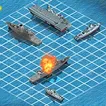























Mining Games: Unearthing the Fun in Digging Deep
Delving into the subterranean realms of virtual worlds, mining games have carved out a niche that captivates a wide array of gamers. At the heart of these games lies the allure of the unknown, the excitement of unearthing hidden treasures, and the satisfaction of creating a thriving operation from the ground up. Players are drawn to the genre for its blend of adventure, strategy, and creativity, each finding their own unique joy in the depths below.
The essence of mining games revolves around the exploration of vast, often procedurally generated environments. With a pickaxe in hand or a drill at the ready, players chip away at the digital earth, uncovering resources that fuel their continued endeavors. The thrill of discovery is a constant companion, as each vein of ore or hidden gemstone promises new possibilities.
Resource management is a critical component, requiring players to balance the pursuit of valuable minerals with the necessities of survival and expansion. Strategic thinkers relish in optimizing their mining operations, ensuring efficiency and profitability. Meanwhile, creative builders enjoy the freedom to construct elaborate bases and machinery, turning their mined materials into impressive architectural feats.
The genre’s evolution has seen an increasing complexity in the experiences offered, with games incorporating elements of survival, combat, and even storytelling. This rich variety ensures that mining games remain a fertile ground for innovation, appealing to treasure hunters and empire builders alike. As players dig deeper, they not only unearth resources but also the very fun in the challenge of digging deep.
Gameplay Mechanics: The Bedrock of Mining Games
At the core of every mining game lies a set of fundamental gameplay mechanics that form the foundation of the player’s experience. These mechanics dictate how players interact with the game world and are crucial in providing a sense of progression and satisfaction.
Resource gathering is the cornerstone of these mechanics, where players must excavate materials from the environment. The act of mining itself is often a meticulous process, requiring careful planning and management of tools and equipment. As players delve deeper, they encounter a variety of resources, each with its own value and use within the game’s economy.
Crafting systems are another key feature, allowing players to convert raw materials into useful items and structures. This transformation process is not only rewarding but also essential for advancing in the game. Crafting can range from simple item creation to complex construction projects, each requiring a strategic approach to resource allocation and management.
Progression systems in mining games often revolve around the player’s ability to upgrade their equipment, expand their base of operations, and access new areas to explore. These systems are designed to keep the player engaged over time, offering a clear path of advancement and a series of attainable goals. The deeper players mine, the more they unlock the game’s potential, leading to a rewarding cycle of discovery and growth.
Together, these gameplay mechanics form the bedrock of mining games, providing a stable platform upon which a myriad of engaging experiences are built. They offer players a tangible sense of achievement as they watch their efforts manifest in the game world, ensuring that each session spent in the depths is both enjoyable and fulfilling.
Building Your Empire: Progression in Mining Games
The allure of mining games often lies in the player’s ability to build and expand their empire, a journey that is both challenging and deeply rewarding. This progression is marked by the player’s transition from a lone miner to a magnate of a vast mining operation. As players invest time and resources, they witness the transformation of their initial humble digs into sprawling complexes of efficiency and innovation.
The sense of accomplishment in mining games is amplified by intricate progression systems that offer a multitude of upgrade paths. Players may choose to focus on enhancing their mining equipment, allowing for faster and more efficient resource extraction. Alternatively, they might prioritize the expansion of their base, enabling them to process resources more effectively or house a growing workforce.
The strategic element of progression comes into play as players must decide the best course of action to maximize their output while managing the constraints of their environment. The satisfaction of constructing a well-oiled mining operation is matched by the visual and functional evolution of the player’s domain. Each new structure or piece of equipment stands as a testament to the player’s achievements and strategic prowess.
Moreover, the progression in mining games often mimics real-world business growth, where investments and expansions must be carefully planned and executed. This not only keeps players engaged but also imparts a sense of realism and relatability to the gameplay. As players scale their operations, they become more than just miners; they become architects of their own virtual success, learning the delicate balance between risk and reward.
In essence, the progression in mining games encapsulates the human drive to build and improve, offering an endless horizon of possibilities that keeps players returning to the depths, eager to see the empire they have built continue to thrive and evolve.
Mining Games as Educational Tools
Mining games transcend mere entertainment, emerging as powerful educational tools that engage players in learning complex concepts through interactive play. These games simulate real-world resource management and economics, challenging players to think critically about the use and conservation of resources. As players manage their virtual mines, they encounter scenarios that mirror the challenges of sustainable development and environmental stewardship.
The educational value of mining games is particularly evident in their ability to teach planning and strategic thinking. Players must consider long-term consequences of their actions, learning to balance immediate needs with future goals. This aspect of gameplay can foster a deeper understanding of project management and logistical planning, skills that are transferable to real-world situations.
Furthermore, these games often incorporate elements of problem-solving and adaptability. Players face unexpected events or resource shortages and must adjust their strategies accordingly. This dynamic environment encourages players to develop resilience and flexibility, qualities that are beneficial in both personal and professional contexts.
In the classroom, mining games can serve as a novel way to introduce students to concepts such as supply chain management, economics, and even geology. By providing a hands-on experience, students can explore these subjects in a context that is both engaging and informative. The interactive nature of these games ensures that learning is active, not passive, fostering a more profound and lasting understanding of the material.
In conclusion, mining games hold significant potential as educational tools, offering an enjoyable medium through which players can gain valuable knowledge and skills. By blending fun with learning, these games can inspire a new generation to think critically about the world around them and their role in shaping a sustainable future.
The Future of Mining Games: What Lies Ahead?
The horizon for mining games is shimmering with potential as the genre continues to evolve. Technological advancements promise to bring more immersive experiences, with virtual reality poised to transport players directly into the depths of their digital mines. Enhanced graphics and more sophisticated AI will create worlds that are not only visually stunning but also dynamically responsive to the player’s actions.
New gameplay mechanics are on the anvil, set to deepen the strategic elements of mining games. We can anticipate more complex resource management systems and environmental interactions, where every choice has a tangible impact on the game’s ecosystem. This will challenge players to devise innovative solutions to new problems, keeping the gameplay fresh and engaging.
Player feedback has become a cornerstone in the development of mining games, with communities often influencing the direction of game updates and features. This symbiotic relationship ensures that games evolve in ways that resonate with their audience, fostering a loyal and active player base.
As we look to the future, the intersection of gaming with other industries could see mining games being used for simulation and training purposes. The skills honed in these virtual environments could have practical applications, bridging the gap between gaming and real-world expertise.
In essence, the future of mining games is not just about digging deeper but also about reaching wider audiences and exploring new possibilities. The genre’s adaptability and the players’ enthusiasm suggest that mining games will continue to be a bedrock of gaming entertainment for years to come, offering endless opportunities for discovery, learning, and growth.







